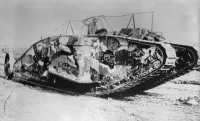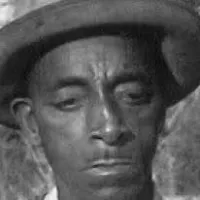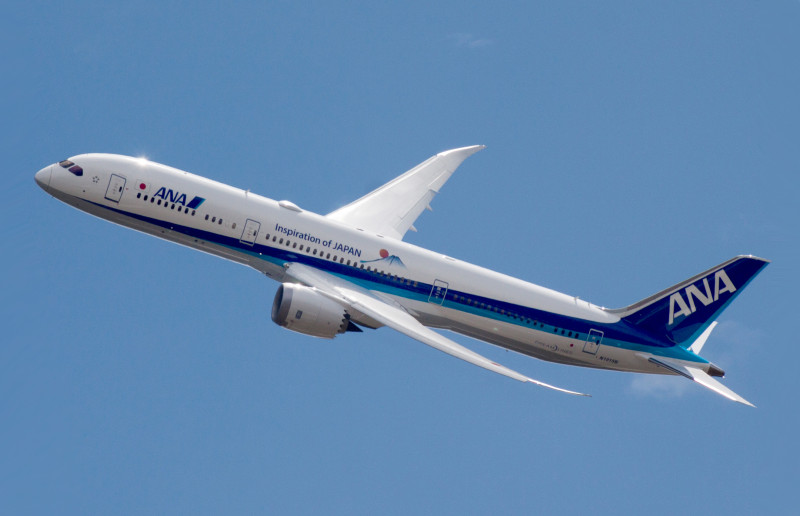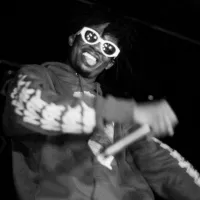11 hours ago : Haifa Under Threat: Missiles Launched, Crime Concerns Rise Amidst Israel-Hamas War.
Haifa faces escalating threats with missile launches forcing Israelis into bomb shelters. Concerns rise that the focus on the Israel-Hamas war overshadows the increasing crime within Israel, including a woman's stabbing death.
1900: Jewish Population Growth
In 1900, the Jewish population in Haifa rose to 1,500, primarily due to continued immigration, on the eve of World War I.
1903: Construction of Jezreel Valley Railway
Between 1903 and 1905, the Jezreel Valley railway was built as a branch of the Hejaz Railway, increasing trade and attracting workers to Haifa.
1905: Construction of Jezreel Valley Railway
Between 1903 and 1905, the Jezreel Valley railway was built as a branch of the Hejaz Railway, increasing trade and attracting workers to Haifa.
1909: Báb's Remains Moved to Haifa
In 1909, Haifa became important to the Baháʼí Faith when the remains of the Báb were moved from Acre to Haifa and interred in the shrine built on Mount Carmel.
1912: Technion Construction Begins
In 1912, construction began on the Technion Institute of Technology, a Jewish technical school, although studies did not begin until 1924.
1912: Technion Founded
In 1912, the Technion – Israel Institute of Technology was founded, becoming the first higher education institution where the language of teaching is Hebrew.
1913: Hebrew Reali School Founded
In 1913, the Hebrew Reali School was founded.
September 1918: Capture of Haifa by British Army
In September 1918, Haifa was captured from the Ottomans by Indian horsemen of the British Army who overran Ottoman positions.
1918: End of Ottoman Rule
After al-Umar's death in 1775, the town remained under Ottoman rule until 1918, with the exception of two brief periods. In September 1918, Haifa was captured from the Ottomans by Indian horsemen of the British Army.
1920: Arab Representation in Haifa's City Council under Mayor al-Haj
Between 1920 and 1927, under Mayor al-Haj, Haifa's city council had six Arab and two Jewish representatives, with overall Arab control.
November 1921: Burial of ʻAbdu'l-Bahá
In November 1921, the remains of ʻAbdu'l-Bahá were buried in a separate room in the shrine on Mount Carmel.
1922: 1922 Census of Palestine
The 1922 census of Palestine, recorded Haifa's population as 24,634 (9,377 Muslims, 8,863 Christians, 6,230 Jews, 152 Baha'i, and 12 Druze).
1924: Technion Studies Begin
In 1912, construction began on the Technion Institute of Technology, a Jewish technical school, and studies began in 1924.
1925: Haifa Electrical Power Station Inaugurated
In 1925, The Palestine Electric Company inaugurated the Haifa Electrical Power Station opening the door to considerable industrialization of the city.
1927: Arab Representation in Haifa's City Council under Mayor al-Haj
Between 1920 and 1927, under Mayor al-Haj, Haifa's city council had six Arab and two Jewish representatives, with overall Arab control.
1931: 1931 Census of Palestine
By the time of the 1931 census of Palestine, Haifa's population had increased to 50,403 (20,324 Muslims, 15,923 Jews, 13,824 Christians, 196 Baha'i, 126 Druze, and 10 with no religion).
1933: Bosmat Established
In 1933, the first technological high school in Israel, Bosmat, was established in Haifa and affiliated with the Technion.
1938: Haifa Population in 1938
In 1938, the population of Haifa was 99,000 people (including 48,000 Jews).
1940: Election of First Jewish Mayor
In 1940, Shabtai Levy was elected as the first Jewish mayor of Haifa.
1945: Haifa Population in 1945
By 1945, the population of Haifa was 138,300 (75,500 Jews, 35,940 Muslims, 26,570 Christians, and 290 "other").
November 1947: UN Partition Plan Designates Haifa
In late November 1947, the UN Partition Plan designated Haifa as part of the proposed Jewish state, leading to Arab protests and violence.
December 1947: Violence at Consolidated Refineries
On 30 December 1947, Irgun members threw bombs into a crowd of Arabs outside the Consolidated Refineries in Haifa, resulting in casualties and subsequent retaliation by Arab employees and the Haganah militia.
1947: Haifa Population in 1947
In 1947, about 70,910 Arabs (41,000 Muslims and 29,910 Christians) and 74,230 Jews were living in Haifa.
April 1948: British Forces Redeploy
On 21 April 1948, British forces in Haifa redeployed, withdrawing from most of the city while maintaining control over the port facilities.
April 1948: Assault by Jewish Forces
On 21 and 22 April 1948, Jewish forces assaulted Arab neighborhoods in Operation Bi'ur Hametz, leading to a displacement of Haifa's Arab population.
May 1948: Haifa Becomes Gateway for Jewish Immigration
After the Declaration of the Establishment of the State of Israel on 14 May 1948, Haifa became the gateway for Jewish immigration into Israel.
October 1948: Arab Population Decline
By 2 October 1948, only 5,000–6,000 of Haifa's original 62,000 Arabs remained in the city due to displacement during the 1948 Palestinian expulsion and flight.
1948: Arab and Jewish Cooperation in Haifa's Municipality before 1948
Before 1948, Haifa's Municipality was known for its cooperation between the Arab and Jewish communities, with representatives from both groups involved in the city's management.
1950: Establishment of the New Haifa Symphony Orchestra
In 1950, the New Haifa Symphony Orchestra was established.
1950: Rare Snowfall in Haifa
The last time snow fell in Haifa was in 1950.
1953: Master Plan Created
In 1953, a master plan was created for transportation and the future architectural layout of Haifa.
1959: Wadi Salib Riots
In 1959, a group of Sephardi and Mizrahi Jews rioted in Wadi Salib, claiming state discrimination and demanding "bread and work".
1963: University of Haifa Founded
In 1963, the University of Haifa was founded on top of Mt. Carmel.
1975: Founding of the Haifa Cinematheque
In 1975, the Haifa Cinematheque was founded, and it hosts the annual Haifa International Film Festival.
1994: Population Decline
Between 1994 and 2009, Haifa experienced a declining and aging population as young people moved to the center of the country for education and jobs.
1995: Last Haifa Rock & Blues Festival
The last Haifa Rock & Blues Festival took place in 1995 with Sheryl Crow, Suede, and Faith No More as headliners.
1996: World Windsurfing Championship
In 1996, the city of Haifa hosted the World Windsurfing Championship.
1999: Palestinian Suicide Attacks
From 1999 to 2003, several Palestinian suicide attacks took place in Haifa, killing 68 civilians.
2002: Residential construction around Kiryat Haim and Kiryat Shmuel
Between 2002 and 2004, 75,000 square meters of new residential construction occurred around Kiryat Haim and Kiryat Shmuel.
2003: Palestinian Suicide Attacks
From 1999 to 2003, several Palestinian suicide attacks took place in Haifa, killing 68 civilians.
2003: Election of the 12th City Council
The 12th city council of Haifa was elected in 2003 and consisted of 31 members, with the Shinui-Greens ticket holding the most seats (6) and Likud coming second with 5.
2004: Residential construction around Kiryat Haim and Kiryat Shmuel
Between 2002 and 2004, 75,000 square meters of new residential construction occurred around Kiryat Haim and Kiryat Shmuel. In 2004, 80% of construction in the city was private.
2004: Attendance at Haifa Symphony Orchestra Concerts
In 2004, 49,000 people attended the concerts of the New Haifa Symphony Orchestra.
2004: Haifa Municipal Libraries
In 2004, Haifa had 16 municipal libraries stocking 367,323 books.
2004: Hospital Admissions in Haifa
In 2004, Haifa's medical facilities had a total of 4,000 hospital beds and 177,478 hospital admissions.
2005: Tourism Statistics in Haifa
In 2005, Haifa had 13 hotels with 1,462 rooms and a 17 km shoreline with 5 km of beaches.
2006: Haifa School Statistics
As of 2006, Haifa had 70 elementary schools, 23 middle schools, 28 academic high schools and 8 vocational high schools.
2006: Baháʼí Shrine Visitors
Between 2005 and 2006, the Baháʼí World Centre's shrine was visited by 86,037 people.
2006: Shkhunatit Trial Network
In 2006, Haifa implemented a trial network of neighborhood mini-buses – named "Shkhunatit" and run by Egged.
2006: Demographics of Haifa
In 2006, Haifa's population consisted of approximately 82% Israeli Jews, almost 14% Christians (mostly Arab Christians), and about 4% Muslims. Demographic trends in 2006 showed a younger Arab population compared to the Jewish and other groups in the city.
2006: Legislative Elections Results
In the 2006 legislative elections, the Kadima party received approximately 28.9% of the votes in Haifa, while Labor received 16.9%.
2007: Haifa Tourism Development Report
A 2007 report commissioned by the Haifa Municipality proposed the construction of more hotels, a ferry line to Acre and Caesarea, the development of the western anchorage, and an expansion of the local airport and port.
2007: Bosmat Closed
In 2007, Bosmat was closed due to financial difficulties, before later being re-established as part of the Mofet network.
2008: Baháʼí Gardens Designated a UNESCO World Heritage Site
In 2008, the Baháʼí gardens in Haifa were designated a UNESCO World Heritage Site.
2008: Night Buses Operated
Since the summer of 2008, night buses are operated by Egged in Haifa (line 200) and the Krayot suburbs (line 210).
2009: Positive Net Immigration
In 2009, Haifa showed positive net immigration for the first time in 15 years, reversing its population decline.
December 2010: Carmel Tunnels Opened
The Carmel Tunnels opened for traffic on December 1, 2010, routing traffic under Mount Carmel and reducing congestion in the downtown area.
2010: Monocle Ranks Haifa with Promising Business Potential
In 2010, Monocle magazine identified Haifa as the city with the most promising business potential, noting significant regeneration efforts and investment opportunities.
July 2012: Building Height Restriction on Mount Carmel
In July 2012, the Haifa municipality enacted a ban on the construction of any new buildings taller than nine stories on Mount Carmel.
December 2012: GetTaxi Launch
In December 2012, GetTaxi, an app and taxi service, began operating in Haifa with 50 taxis.
2012: Waterfront Development Plan Announced
In 2012, a major development plan was announced for Haifa's waterfront, including the transformation of the western port section into a tourism and nightlife center, the burying of train tracks, the creation of a park, and the dismantling of the ammonia depository tank in Haifa Bay.
August 2013: Metronit System Opened
On August 16, 2013, the Metronit bus rapid transit system officially opened, serving three lines.
2013: 24/7 Public Transportation
Since 2013, Haifa became the only city in Israel with 24/7 public transportation, along with route 1 of the Metronit.
2014: New City Plan Proposed
In 2014, a new major plan was proposed for Haifa, aiming to increase the city's population by 60,000 by 2025 through extensive development of residential, business, and leisure areas.
2014: Sammy Ofer Stadium Completed
In 2014, the UEFA-approved 30,942-seat Sammy Ofer Stadium was completed, replacing the Kiryat Eliezer Stadium.
2016: Development Plan Approved
A development plan approved in 2016 seeks to raise Haifa's population to 330,000 residents by 2025.
2016: Haifa as a Major Seaport
As of 2016, Haifa is a major seaport on Israel's Mediterranean coastline. The city is a major regional center of northern Israel. Two academic institutions, the University of Haifa and the Technion are located in Haifa. Matam, one of the oldest and largest high-tech parks in the country is also located in Haifa.
2016: Kiryat Eliezer Stadium Demolished
In 2016, the 14,002-seat Kiryat Eliezer Stadium was demolished.
2019: Boar Management Policy Change
In 2019, Haifa's mayor, Einat Kalisch-Rotem, made the decision to stop shooting the boars that had been roaming the city's streets since before 2019.
April 2022: Rakavlit Opened
In April 2022, Rakavlit, a commuter cable car service, opened, running from HaMifratz Central Bus Station to the Technion and the University of Haifa.
2025: Development Plan Goal
A development plan approved in 2016 seeks to raise Haifa's population to 330,000 residents by 2025.
2025: Population Growth Target
In 2014, a new major plan was proposed for Haifa, aiming to increase the city's population by 60,000 by 2025 through extensive development of residential, business, and leisure areas.
Mentioned in this timeline

A tank is an armored fighting vehicle designed for front-line...

Football is a family of team sports centered around kicking...
Lebanon officially the Republic of Lebanon is a country in...

Blues is a music genre originating from African-Americans in the...

A car or automobile is a wheeled motor vehicle designed...

Trains are a connected series of vehicles traveling on railway...
Trending

1 month ago Speculation Surrounds Frank Ocean's Potential Return: Will He End His Retirement?

31 minutes ago Topuria targets Pimblett, promising a 'real fight' if UFC books the match.

14 days ago Alexandra Daddario shares adorable son's travel photos and stuns in a sheer dress.

1 hour ago Oliveira's Style a Concern; Topuria Issues Warning Ahead of UFC 317 Fight

2 days ago Marcus Mumford halts Oregon concert midway due to emergency, leaves stage abruptly.

2 hours ago Jake Paul Achieves First-Round Knockout Victory in Professional Boxing Debut Despite Game Plan Issues
Popular

The Boeing Dreamliner is an American wide-body airliner developed by...

Greta Thunberg is a Swedish climate activist who gained international...

Cristiano Ronaldo often called CR is a Portuguese professional footballer...

Thomas Douglas Homan is an American law enforcement officer and...

Gavin Newsom is an American politician and businessman currently serving...

Playboi Carti born Jordan Terrell Carter is an American rapper...